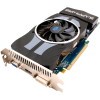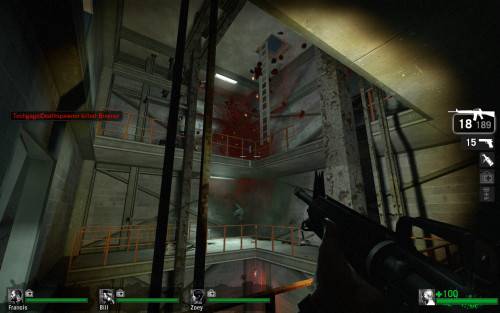- Qualcomm Launches Snapdragon 4 Gen 2 Mobile Platform
- AMD Launches Ryzen PRO 7000 Series Mobile & Desktop Platform
- Intel Launches Sleek Single-Slot Arc Pro A60 Workstation Graphics Card
- NVIDIA Announces Latest Ada Lovelace Additions: GeForce RTX 4060 Ti & RTX 4060
- Maxon Redshift With AMD Radeon GPU Rendering Support Now Available
Sapphire Radeon HD 4870 Vapor-X 2GB

Believe it or not, despite the HD 4890’s launch last month, the HD 4870 is still totally relevant, thanks to ATI’s current pricing structure. There’s a card for every budget, and if you’re willing to spend around $180, you can get hooked up with a 1GB version of the card we’re taking a look at today. It’s silent, keeps cool, and still delivers great performance for the money.
Page 6 – Left 4 Dead
Not too many game publishers can brag about having such a great track record like Valve can. None of their major game releases have ever been released to anything but praise, which goes to show that not rushing to release a game to please investors can make a huge difference. Take Half-Life 2, Team Fortress 2 and Portal, for example.
Left 4 Dead is one game I didn’t take seriously up until its launch. After playing it though, my opinions changed drastically, and even as I type this, I feel like saving the document and going to play. But, I’m also scared of Zombies, so continue writing I shall. Like Dead Space, this game is a survival shooter, but unlike that game, this title focuses completely on co-op. For the most part, the game is dulled in single player, but team up with three of your friends and let the laughs and excitement begin.
The portion of the level we use for testing is contained within the No Mercy campaign. The ultimate goal in the entire campaign is to make it to the top of a hospital in order to be picked up and brought off to safety. Our run through takes place in the final part of the the campaign, which leads up towards the roof tops. If one thing can be said about this title, it’s that causing a Boomer to explode (as seen in the above screenshot) proves to be one of the most satisfying things to do in any game I’ve played in a while.



Although our Sapphire card ranked low compared to the others in our final two graphs, the point is moot really. This is one game that runs well on almost anything, and even our lowly GTS 250 handles the game with max detail at 2560×1600 and 4xAA. If only more games were like this!
|
Graphics Card
|
Best Playable
|
Avg. FPS
|
|
NVIDIA GTX 295 1792MB x 2
|
2560×1600 – Max Detail, 8xMSAA
|
117.701 FPS
|
|
Palit HD 4870 X2 2GB
|
2560×1600 – Max Detail, 8xMSAA
|
117.039 FPS
|
|
NVIDIA GTX 285 1GB x 2
|
2560×1600 – Max Detail, 8xMSAA
|
109.491 FPS
|
|
Zotac GTX 295 1792MB
|
2560×1600 – Max Detail, 8xMSAA
|
102.422 FPS
|
|
NVIDIA GTX 275 896MB
|
2560×1600 – Max Detail, 8xMSAA
|
79.651 FPS
|
|
Sapphire HD 4890 1GB
|
2560×1600 – Max Detail, 8xMSAA
|
73.803 FPS
|
|
NVIDIA GTX 285 1GB
|
2560×1600 – Max Detail, 8xMSAA
|
72.072 FPS
|
|
Palit GTX 280 1GB
|
2560×1600 – Max Detail, 8xMSAA
|
66.775 FPS
|
|
Sapphire HD 4870 2GB
|
2560×1600 – Max Detail, 8xMSAA
|
66.638 FPS
|
|
Diamond HD 4870 1GB
|
2560×1600 – Max Detail, 8xMSAA
|
66.294 FPS
|
|
XFX GTX 260/216 896MB
|
2560×1600 – Max Detail, 8xMSAA
|
56.608 FPS
|
|
NVIDIA GeForce GTS 250 1GB
|
2560×1600 – Max Detail, 8xMSAA
|
47.142 FPS
|
|
ASUS GeForce 9800 GTX+ 512MB
|
2560×1600 – Max Detail, 4xMSAA
|
62.571 FPS
|
|
Sapphire HD 4830 512MB
|
2560×1600 – Max Detail, 4xMSAA
|
48.612 FPS
|
|
Sapphire HD 4670 512MB
|
2560×1600 – Max Detail, 0xAA
|
39.770 FPS
|
Given the fact that the card eats up this game at even our top setting, upping the anti-aliasing to 8xMSAA did nothing to the gameplay. Though the average FPS decreased, it was still remarkably playable.
Support our efforts! With ad revenue at an all-time low for written websites, we're relying more than ever on reader support to help us continue putting so much effort into this type of content. You can support us by becoming a Patron, or by using our Amazon shopping affiliate links listed through our articles. Thanks for your support!






